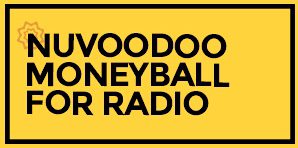Moneyball: Getting Preset in New Car Infotainment Systems


One friend took delivery of a new BMW a month ago. I knew him as a regular-to-frequent listener of the alternative-leaning music FMs here in Philly, but last week Spotify was on the infotainment system as we headed to dinner. A few minutes into the drive, commercials came on showing it was the free version of Spotify, so I asked about it. He said he knew how to get to the FM stations, but the free Spotify has gotten good at playing a stream of songs he likes well enough. For him, the comparatively sparse commercial load on Spotify, as repetitive those few commercials are, was a small price to pay compared to the lengthy commercial breaks on FM.
There are things he misses about FM: mention of bands coming to the area, the highlighting of new songs and new artists, casual mentions of weather and things going on in the area. For a busy person, however, finding the time to finish up the presets on the new vehicle has become a tertiary priority. And like the tertiary priorities in most of our lives, this is likely to be something he’ll never get around to doing. And that’s one less broadcast radio listener.
This isn’t the first time I’ve watched a friend make this adaptation when confronted with a new car infotainment system. The friend I’ve described isn’t the only one “settling” for free Spotify. Another found CarPlay to be a good way to listen to her audiobooks. So, she “settles” for spending more time with her books, even though she’s aware she misses plot points in the listening in the car. We know about “settling” from a research study years ago: eventually some people change to something that’s more to their liking, but others decide that the thing they’re “settling” for is good enough.
Admittedly, these observations are anecdotal and based on a sample of fewer than a dozen people. You could discount their experiences because they’re all over age 54. But most people over age 54 have been lifelong radio users and should have better connections with stations and the medium overall than younger people. In fact, one friend who’s conquered their new infotainment system did so because he’s a fan of the longtime hosts on one of the FM stations. Another friend is a “member” of a local public radio station.
It may not be any one thing that retains radio listeners in the face of new listening systems. It stands to reason, though, that the more things we bring to bear, the more likely we are to succeed in getting them to surmount the obstacle of reading the owner’s manual/watching a how-to video on YouTube, customizing their vehicle’s menu, setting the new presets, etc. Things that push your station beyond the status of a mere music utility are great. Things that make listeners feel connected to your station are amazing. Being in regular touch with listeners via email and social media is a definite plus.
We’re looking at lots of ways stations can get listeners to share their email addresses or mobile phone numbers in Ratings Prospects Study 24. In 2024 it’s less about P1 — those who say they listen most to your station — and more about 1P — First Party Data. Collecting that contact information, earning permission to communicate with them, and maintaining a steady stream of welcomed information is key to radio’s future. We’ll be sharing the results of Ratings Prospects Study 24 later in June to help radio shape programming, promotion, and marketing plans for its fall report card from Nielsen. Questions? Contact Leigh Jacobs at Leigh@nuvoodoo.com.




